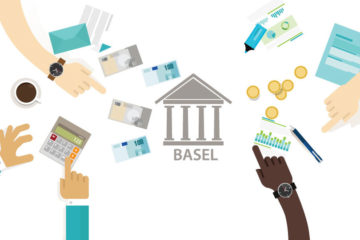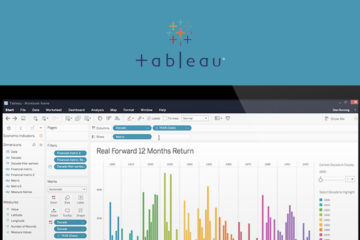Navigating Regulatory Change: The Path to Standardization & Legal Entity Identifiers (LEIs)
On Dec 1, 2011, Thomson Reuters held an event titled Navigating Regulatory Change: The Path to Standardization; with panel participants including:
- Ludwig D’ Angelo, Executive Director, JP Morgan;
- Norman Brower, Executive Director, Reference Data, Morgan Stanley;
- David Goldberg, Managing Director, Head of Enterprise Client Data Management, The Bank of New York Mellon; and
- Tim Lind, Global Head of Strategy & Business Development, Enterprise Content, Thomson Reuters (Moderator).
Below is a brief summary of the panel discussion as well as insights from other sources regarding Legal Entity Identifiers (LEIs).
Background
In an effort to enhance the understanding and monitoring of systemic risk, the US Office of Financial Research (OFR) proposed using LEIs to standardize financial reference data. The OFR is an agency established under the Dodd-Frank Act in 2010. An LEI is a unique 20 digit number which is associated with an entity in the financial market; it can be compared to a social security number for individuals.
The Need for a Global Standard
A lack of standardization presents issues in assessing counterparty risk exposure. Multiple systems and identifiers in different companies make it difficult to aggregate data and calculate total exposure. Although there is a clear demand for a global standard; previous attempts at standardization have failed due to the scope and global nature of the undertaking. It is expected that this attempt will be more successful due to the involvement and support of the OFR and other regulatory agencies.
Benefits
The establishment of LEIs will help financial services firms effectively measure and manage counterparty exposures, improve efficiency in operations, and enhance customer service in the industry. Additionally, LEIs will enhance the management of systemic risk through improved quality of reference data.
Common identifiers will help monitor and manage systemic risk and improve firm risk management and operations. Key benefits include:
- Efficient data aggregation
- Information sharing and reconciliation
- Holistic view of counterparty risk/exposure
- Improved quality of reference data
- Central repository of data for analysis
- LEI’s are non-intrusive and not expensive
- Minimal information disclosure; not bound by privacy limitations
Challenges
One of the key challenges for the LEI solution is that broad adoption is necessary for successful implementation. Additionally, the global nature of the solution will present challenges. Some specific challenges discussed by the panel include:
- Firms will continue to use internal identifiers; abandonment of internal identifiers will not be an option because not all entities will have an LEI
- If the standard is not mandated, budget constraints may be an issue
- Industry consolidation (mergers & acquisitions) present challenges due to multiple identifiers
- Ease of implementation depends on the size of the firm and the maturity model of internal identifiers. Large universal banks may face implementation challenges due to the diversity and complexity of their operating environments
Responsibilities & Scope of Coverage
To allow for operationalization of the standard, recommendations are as follows:
- The Depository Trust & Clearing Corporation (DTCC) will act as the facility manager.
- The Society for Worldwide Interbank Financial Telecommunications (SWIFT) will act as the registration authority
- The International Organization for Standardization (ISO) will issue the standard
- The Association of National Numbering Agencies (ANNA) will be a key partner through its 81 local national numbering agencies- by registering, validating and maintaining LEIs
Norman Brower discussed the scope and prioritization of LEI implementation, stating that it will be established at the entity level for systemically important legal entities (vs. branch or instrument level) and that the scope will likely increase over time.
David Goldberg estimates that the universe of entities with major systemic risk globally is limited to 40,000 to 60,000 with no more than a maximum of 300,000. Ludwig D’Angelo agreed with the estimate.
Timeline and Key Milestones
The timeline below demonstrates the progress made towards the LEI initiative:
- Dodd-Frank Act establishes the OFR, which is authorized to set standards for how U.S. firms identify themselves in reporting to the OFR – July 2010
- OFR publishes a policy statement to promote LEI establishment, requesting public input on requirements for LEI, reference data, and a system for issuance and validation of LEIs and reference data – November 2010
- The International Organization for Standardization (ISO) establishes working groups to establish the LEI standard, create a draft of requirements, and identifies a registration authority for oversight – March 2011
- A group of industry professionals and trade associations publish a proposal for industry requirements for a global LEI standard – May 2011
- A group of industry professionals and trade associations publish recommendations for LEI implementation – July 2011
- ISO standard (ISO 17442) is expected to be published – first quarter 2012
- Tactical & strategic implementation – 2012
Conclusion
As stated by the panel, “implementation of LEIs is not a matter of if, but when.” Even if the standard is not mandated, firms are expected to volunteer to implement the standard for their own benefit of improved risk management practices. Next steps include further consultation with the international regulatory community to make adoption of the LEI solution feasible.
References
Thomson Reuters Event: Navigating Regulatory Change: The Path to Standardization (December 1, 2011)
Treasury: Legal Entity Identifier (LEI) – Timeline of Major Events








